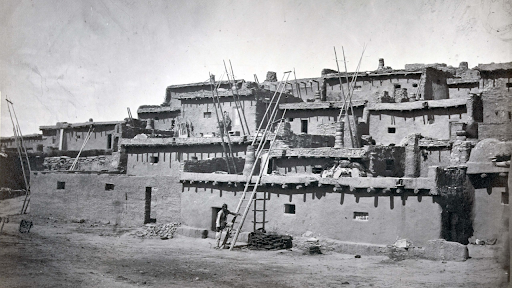Pueblo Architecture And Its Historical Significance
Share
Pueblo architecture is a remarkable testament to the ingenuity and resilience of indigenous cultures in the American Southwest. This architectural style not only reflects the environmental adaptations of its builders but also embodies a rich tapestry of cultural history and social organization. In this article, we will explore the unique features of Pueblo architecture, its historical significance, and its enduring legacy.
Understanding Pueblo Architecture
Pueblo architecture primarily refers to the structures built by the Pueblo peoples, including the Hopi, Zuni, and Taos tribes, among others. These communities have inhabited the arid landscapes of the Southwestern United States for centuries, developing a distinctive architectural style that is both functional and symbolic.
Key Features of Pueblo Architecture
-
Adobe Construction: Traditional Pueblo buildings are made from adobe, a mixture of clay, sand, and straw. This material is abundant in the Southwest and provides excellent insulation against the region's extreme temperatures.
-
Multi-Story Structures: Many Pueblo homes are multi-storied, often built in a terraced style. This design maximizes space and provides a communal living environment, reflecting the social structure of Pueblo communities.
-
Kivas: A significant feature of Pueblo architecture is the kiva, a circular, underground chamber used for religious ceremonies and social gatherings. Kivas are often intricately designed and hold great cultural significance.
-
Natural Integration: Pueblo buildings are typically constructed to blend harmoniously with their surroundings. The use of local materials and the consideration of the landscape in their design highlight the Pueblo peoples' deep connection to their environment.
Historical Context
Pueblo architecture has evolved over thousands of years, influenced by various factors including climate, available resources, and cultural exchanges with neighboring tribes and European settlers.
Pre-Columbian Era
The roots of Pueblo architecture can be traced back to the Ancestral Puebloans, also known as the Anasazi, who inhabited the Four Corners region of the United States. Their cliff dwellings and masonry structures laid the groundwork for the architectural styles that would follow. The transition from nomadic lifestyles to settled agricultural communities around 1000 AD marked a significant turning point, leading to the development of more permanent structures.
Spanish Colonization
The arrival of Spanish colonizers in the 16th century brought profound changes to Pueblo life. While many aspects of traditional architecture remained, the Spanish introduced new building techniques and materials, such as tile roofs and stone masonry. This fusion of styles is evident in many contemporary Pueblo structures.
Cultural Significance
Pueblo architecture is not merely a reflection of physical shelter; it embodies the spiritual beliefs and social practices of the Pueblo peoples. The layout of a Pueblo community often mirrors the cosmos, with kivas representing the underworld and the multi-storied buildings symbolizing the sky. This architectural language serves as a means of cultural expression and identity.
Preservation Efforts
In recent years, there has been a growing recognition of the importance of preserving Pueblo architecture as a vital part of American heritage. Various initiatives aim to protect these structures from environmental degradation and the impacts of modernization.
National Parks and Monuments
Many Pueblo sites have been designated as national parks or monuments, providing legal protection and promoting awareness of their historical significance. For instance, Bandelier National Monument and Mesa Verde National Park showcase the architectural achievements of the Ancestral Puebloans and their descendants.
Community Involvement
Pueblo communities are actively involved in preservation efforts, often leading initiatives to restore and maintain their traditional structures. This grassroots approach ensures that the cultural practices associated with Pueblo architecture are passed down through generations.
Visiting Pueblo Sites
For travelers interested in experiencing Pueblo architecture firsthand, several sites across the Southwest offer unique opportunities. Here are some key destinations:
Taos Pueblo, New Mexico
Taos Pueblo is a UNESCO World Heritage Site and one of the oldest continuously inhabited communities in the United States. Visitors can explore the adobe structures, learn about the Pueblo's history, and participate in cultural events.
Acoma Pueblo, New Mexico
Known as "Sky City," Acoma Pueblo is perched atop a mesa and offers breathtaking views of the surrounding landscape. The pueblo is famous for its pottery and traditional ceremonies, making it a must-visit for those interested in indigenous culture.
Zuni Pueblo, New Mexico
Zuni Pueblo is renowned for its vibrant arts and crafts, particularly intricate jewelry and pottery. The community welcomes visitors to learn about their traditions and the significance of their architectural heritage.
Best Time to Visit
The best time to visit Pueblo sites generally falls between spring and fall, when the weather is mild and conducive to outdoor activities. Spring (March to May) brings blooming wildflowers and pleasant temperatures, while fall (September to November) offers stunning autumn foliage. Summer can be hot, especially in the desert regions, so plan accordingly.
Weather Information
- Spring: Average temperatures range from 50°F to 80°F (10°C to 27°C).
- Summer: Expect highs of 90°F (32°C) or more, with cooler evenings.
- Fall: Temperatures drop to between 40°F and 70°F (4°C to 21°C).
- Winter: Cold, with temperatures often below freezing, especially at night.
Conclusion
Pueblo architecture stands as a remarkable symbol of resilience, creativity, and cultural identity. Its historical significance transcends mere aesthetics, reflecting the deep connection between the Pueblo peoples and their environment. As you plan your visit to these extraordinary sites, consider the stories and traditions that each structure holds, and embrace the opportunity to learn from the rich heritage of the Pueblo communities.
For those looking to immerse themselves in this unique cultural experience, booking accommodations and flights is essential. Check out the following links for your travel needs:
Whether you're an architecture enthusiast, a history buff, or simply seeking a deeper understanding of indigenous cultures, the Pueblo architectural landscape offers a profound journey into the past and a vibrant present.




